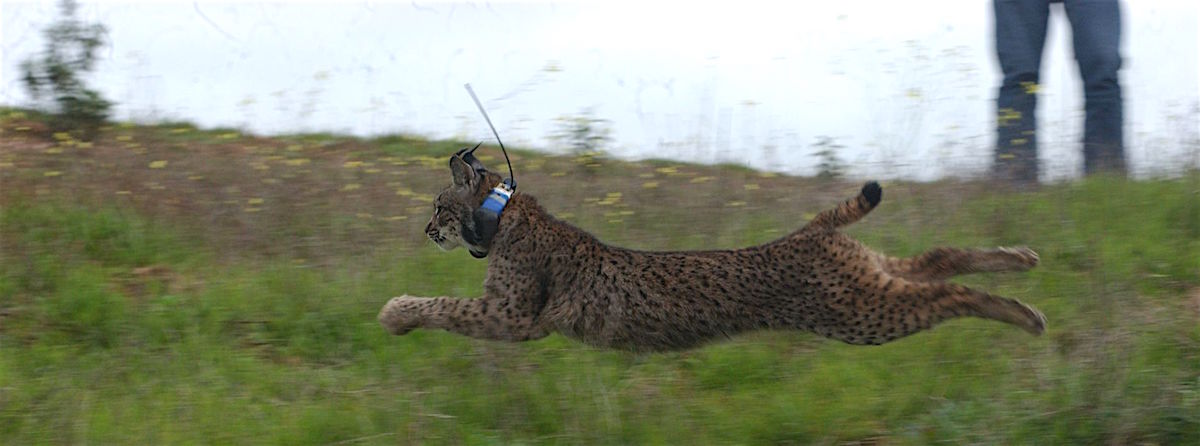The strengthening of the Iberian-lynx populations in the wild for 2016 is half way through. That’s why this is a perfect time for us to give you a status of this conservation project in Portugal and Spain.
Released lynx until now:
This year, the conservation officers began releasing lynx in the wild by 25th January. Since then, a total of 24 animals were released in Iberian countryside. Until April there are another 24 to follow that same path (five of those in Portugal).
Where were they released?
Iberian-lynx conservation has begun releasing animals in nature back in 2012, in Spanish Andalucia. Then, in 2014, it has spread to other regions in these two countries. This year, these were the lynx reintroduced and the locations:
In Portugal (Vale do Guadiana Natural Park): Myrtilis, Mirandilla, Monfrague and Macela
… and in Spain:
Andalucia:
- Guadalmellato: Moral
- Guarrizas: Mirinda, Múrtiga, Musarãna, Marismillas
- Doñana-Aljarafe: Montoro
Castilla-La Mancha:
- Sierra Morena Oriental: Moraira, Mosquito, Mesta, Medellín
- Montes de Toledo: Malabar, Marchés, Mirabel
Extremadura (Vale de Matachel): Mera, Magacela, Maguilla, Majadal, Mayo, Maraca, Milano
How many of these lynx were born in the breeding facility in Portugal?
Seven of the 24 released lynx were born in the breeding facility in Silves (in the south of Portugal): three were released in Extremadura (Mera, Magacela and Maguilla), two were released in Castilla-La Mancha (Marchés and Mesta) and two in the Vale do Guadiana Natural Park (Myrtilis and Macela).
What are the conservation project main goals?
Releasing lynx in the wild is one of the most visible actions in a conservation project with several fronts, including recovering the species habitat and the reproduction to increase the genetic pool of the wild populations. The main goal is to recover the historical distribution of the species, working for its return to the territories it once had. For now, this battle is fought in the South of Portugal and in three Spanish regions (Andalucia, Extremadura and Castilla-La Mancha).
In order to succeed, there are several crucial numbers to consider, specially the number of reproductive female. Iberlince wants to have 70 female in Sierra Morena, 25 in Doñana-Aljarafe, 10 in Guadalmellato and 10 in Guarrizas.
What are the main threats to the Iberian-lynx conservation?
The biggest worries are to control the rabbit’s disease (the rabbit is the favourite prey for this animal) and the number of lynx run over by cars, poisoned or hunted.


